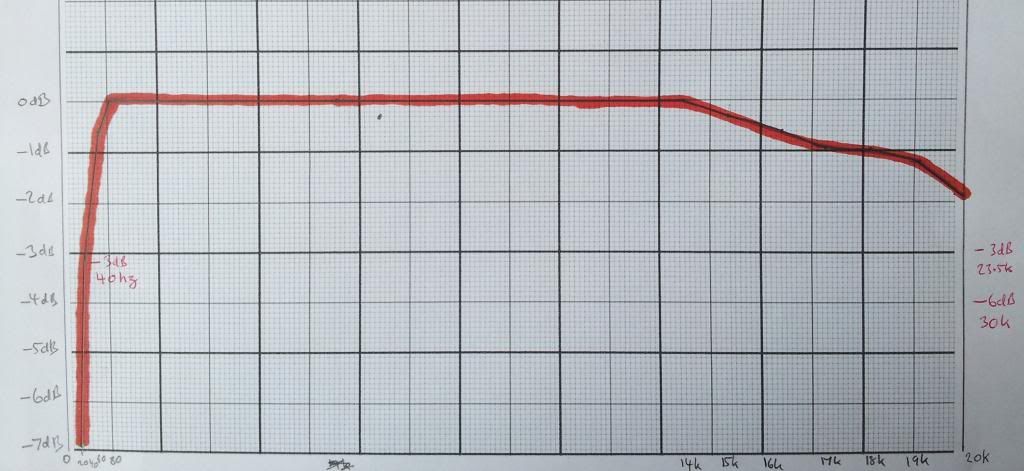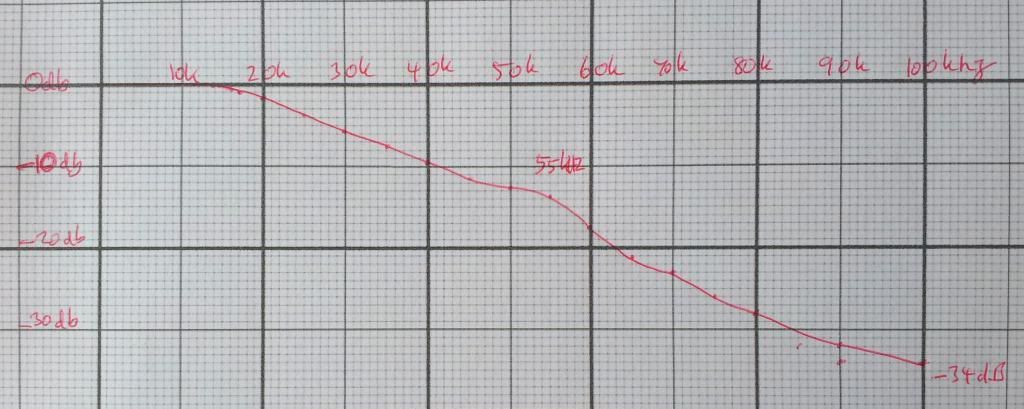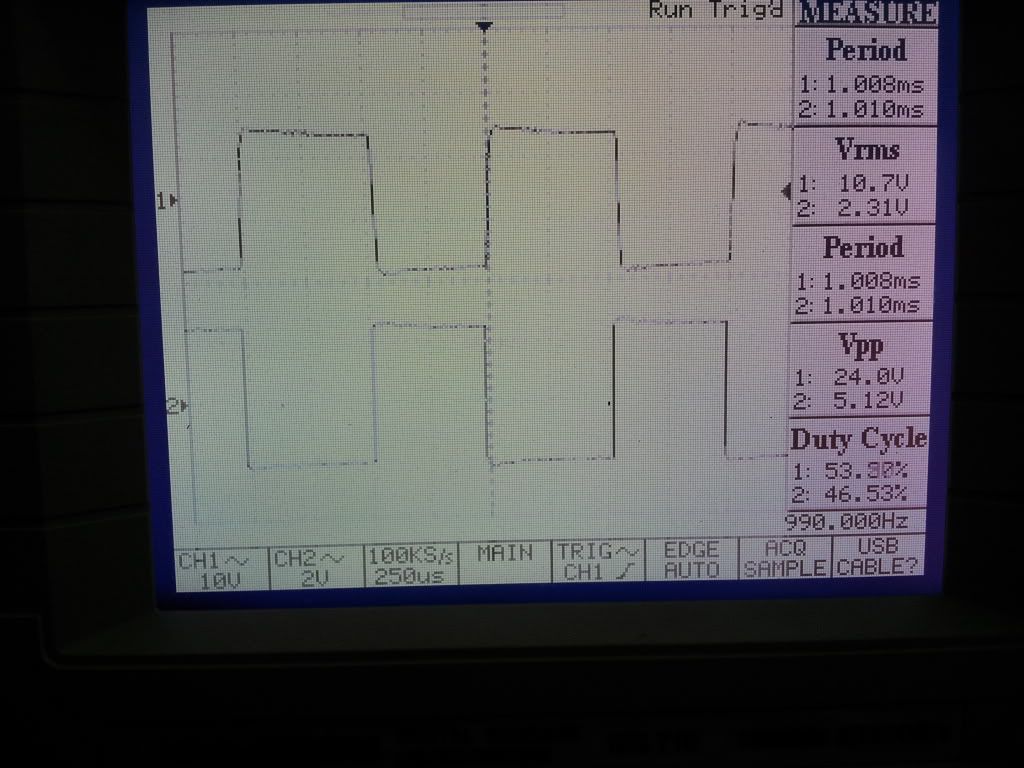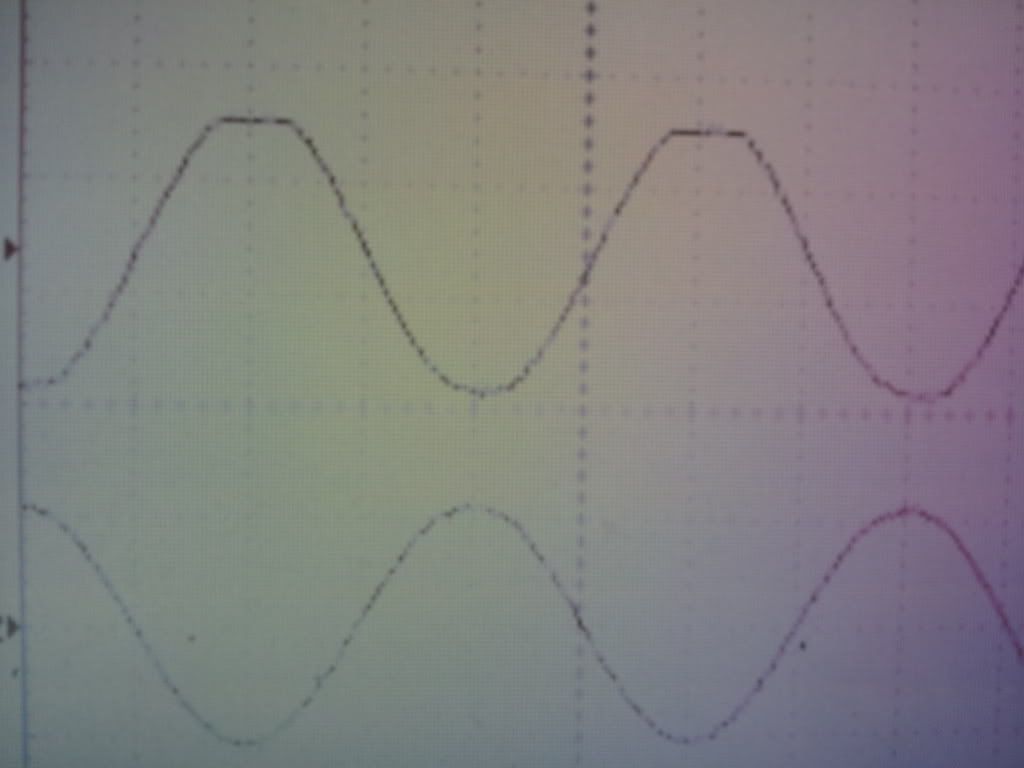Now for a bass response work back.
We know that we are -1dB at 64hz
We now also know that the Plate to Plate inductance of the transformer is 9.09 Henry.
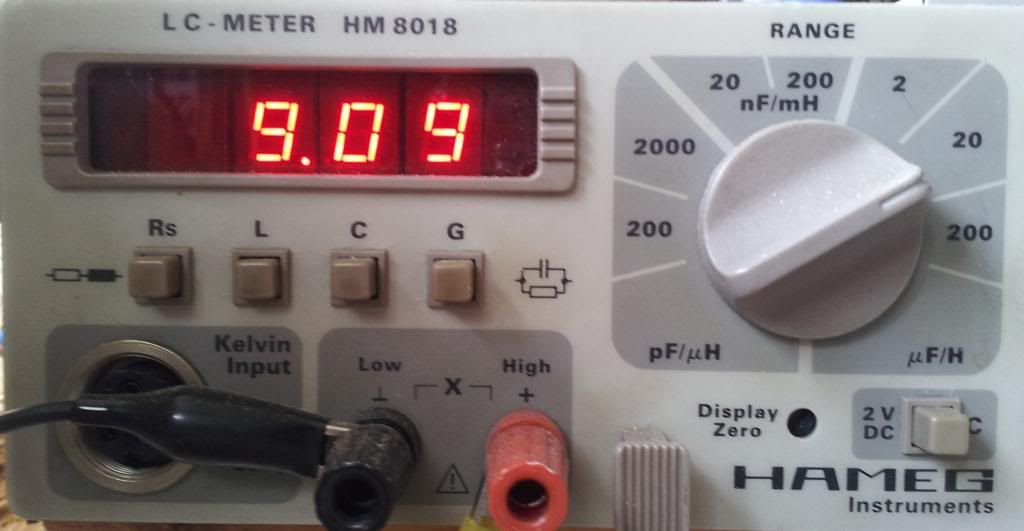
With the slight proviso this was measured statically and low frequency inductance rises with signal level. However Fritz says that it is best to calculate required primary inductance RL at static inductance then things are best for worst case scenario.
What we have to work out is the Rp becuse we have no idea what it is. Triode data is not available.
We can estimate Rp by working back the inductance formula puting in all the known factors and arrive at the only Rp which fits.
wLo=2RA
RA = (2 X Rp) parallel with RL (which we know to be 8k)
w is 2pif which to us is 402 because we know f is 64.
We know L to be 9.09
So RA = 9.09 X 402 = 3,654.
Now RA is made up of the formula (2RpX8000)/(2RP+8000)
So because my mathematic ability stops here I put the figure for RA into a spreadsheet and tried a column of Rp values in the above formula until I got a match. If someone can break down the algebra please do?
My figure is 3,364 ohms anode impedance.
So now that we know that figure we can work out the required inductance for our desired -1dB frequency.
2RA = 2 X 3,654 = 7,308
Inductance = 7308/2pif
For 20hz the figure is 125h for 40hz it is 29h. If you wish to improve quality and calculate it for 0.5db multiply the result by 1.9 and Fritz advises this figure because the phase angle improves to 15 degrees which he says this "appears to be a reasonable value for good fidelity".
Therefore for hi fidelity at 20hz we need Primary inductance of 237h or at 40hz 55h.
Now I would be perfectly happy with 40hz.
So working back where does that put us with this amplifier? Where is the hi fidelity bass response? Well without more workings out, if we round up the 1.9 to 2, we simply double the frequency.
So we have hifi down to 128hz.
Or to put it another way, these transformers are a pile of pooh.
The real problem is that they have wound them for 8k. If they had wound them for 4k they could be used for a 2a3 for instance, though they would still be of poor quality for push pull transformers. Budget Se transformers which have to be gapped are quite often only 10h and seldom greater than 20h. But push pull transformers have no excuses for such shoddy quality.
They shall have to go on eBay as guitar amplifier transformers. OR else I shall have to make a couple of guitar amplifiers and bang those on eBay. One or the other.
You can still get to hear the amp at Owsten.
I now understand more clearly why my little 6em7 750mW amp stomps all over it at low level!
If they had wound them as 3k for 2a3 they would be -1db at 18 hz and good phase response at 36hz which would be spectacular preformance.
Or at 8k they would be 23hz 46hz but how much power would 2a3's produce into 8k?
Maybe I need to find out? I shall have to be careful I can see this journey culminating at my nemesis.
"Two things are infinite, the universe and human stupidity, and I am not yet completely sure about the universe." – Albert Einstein
